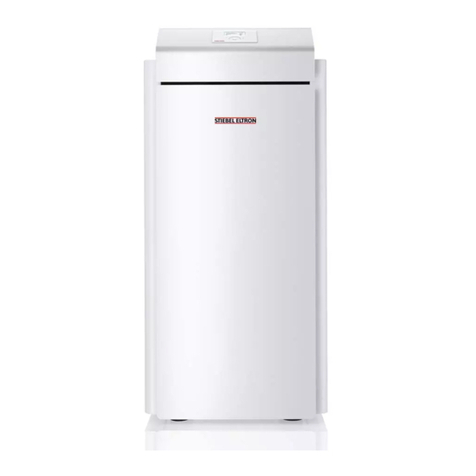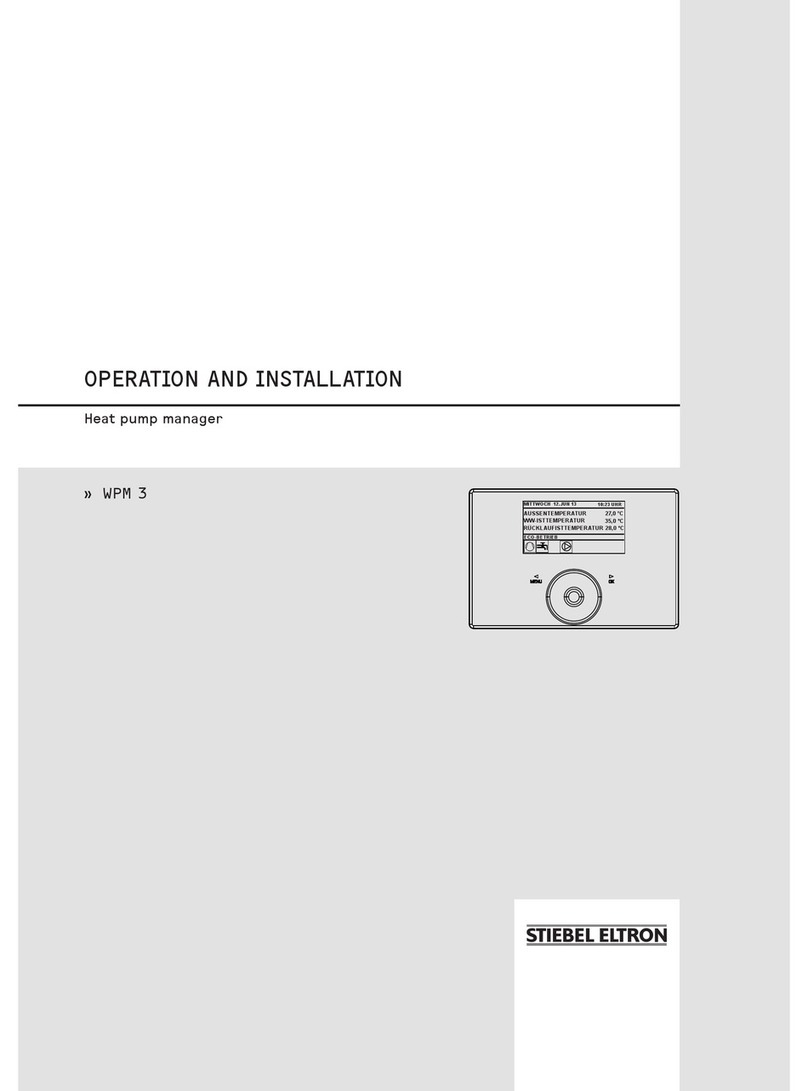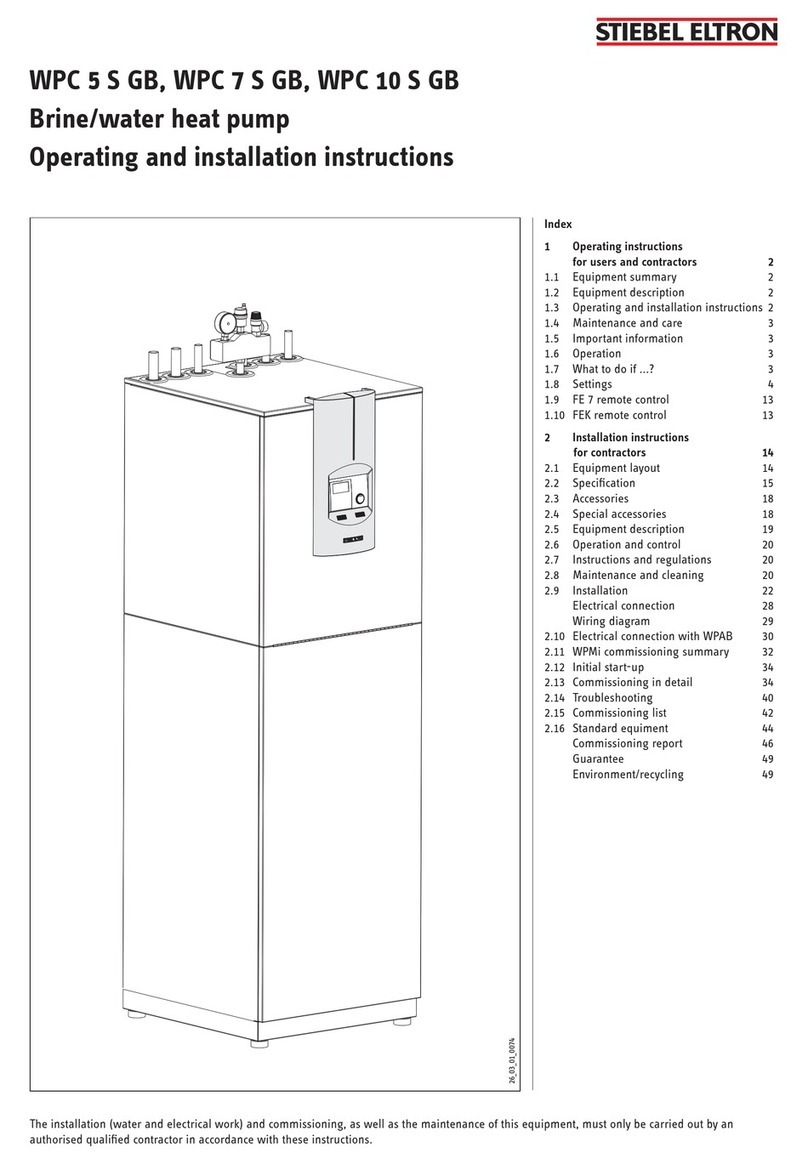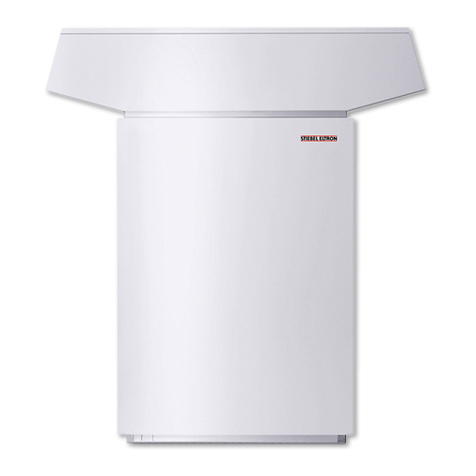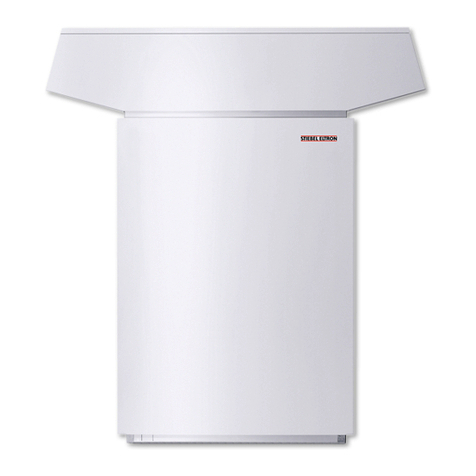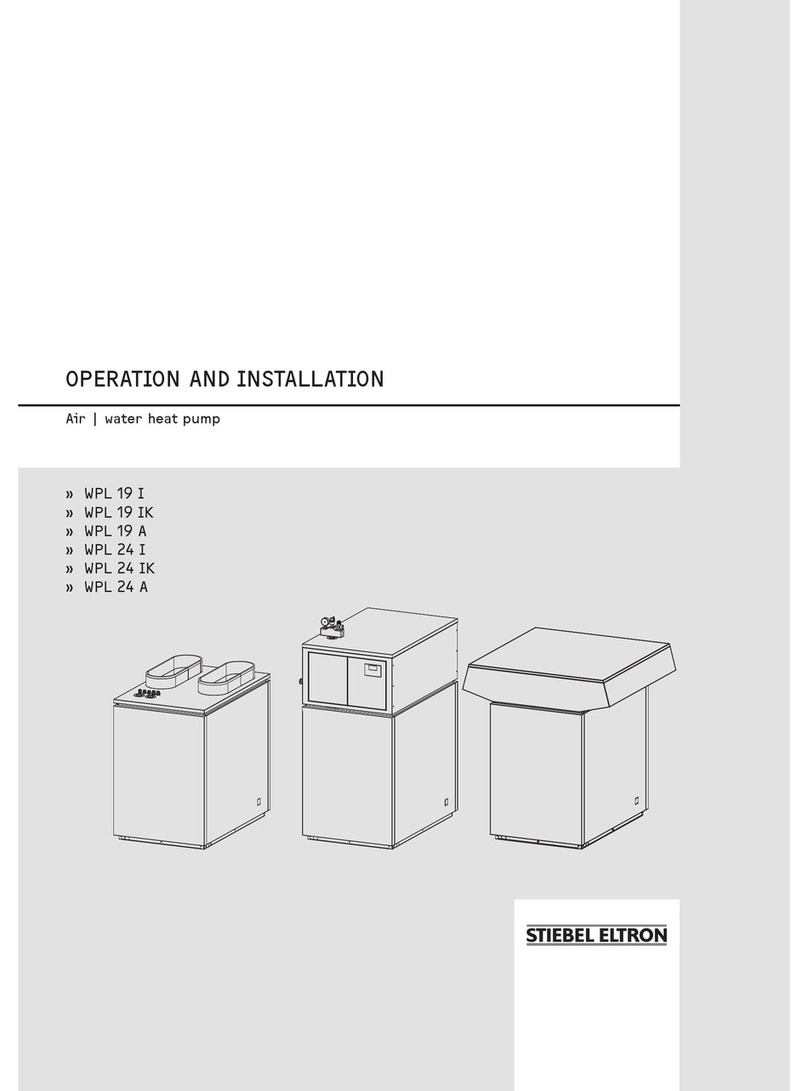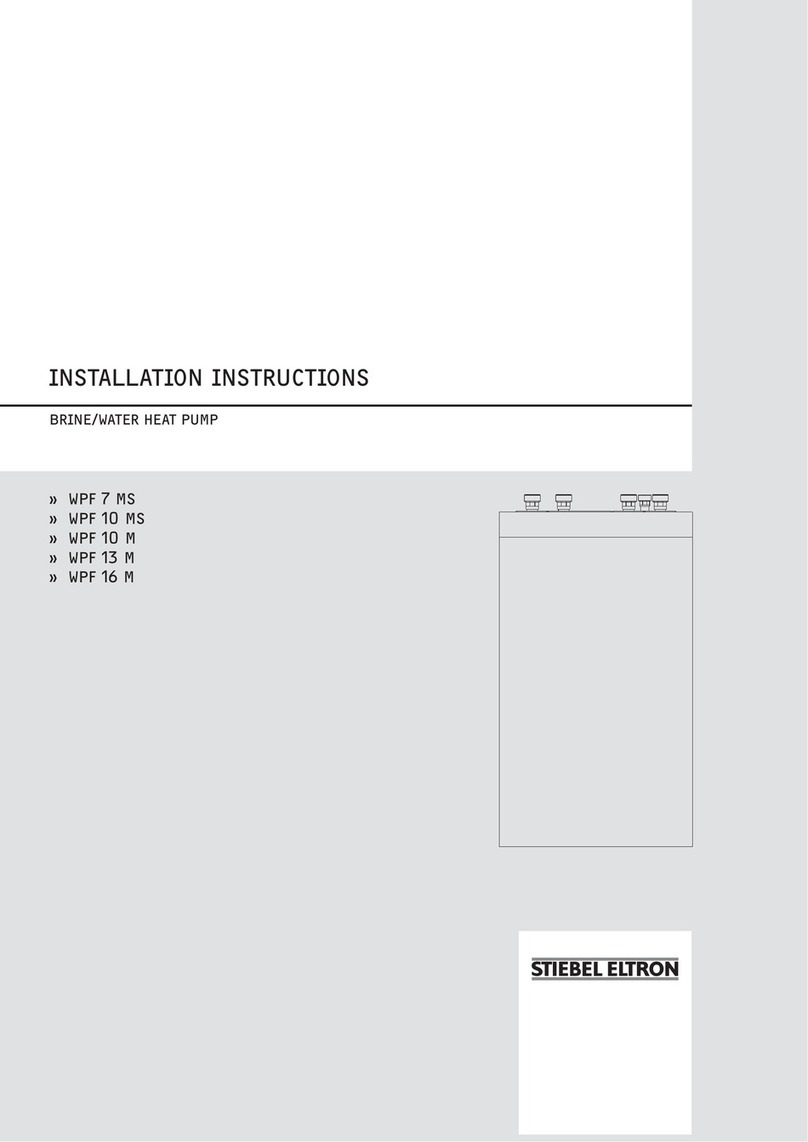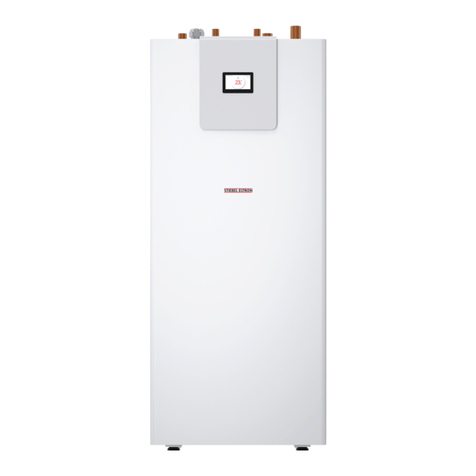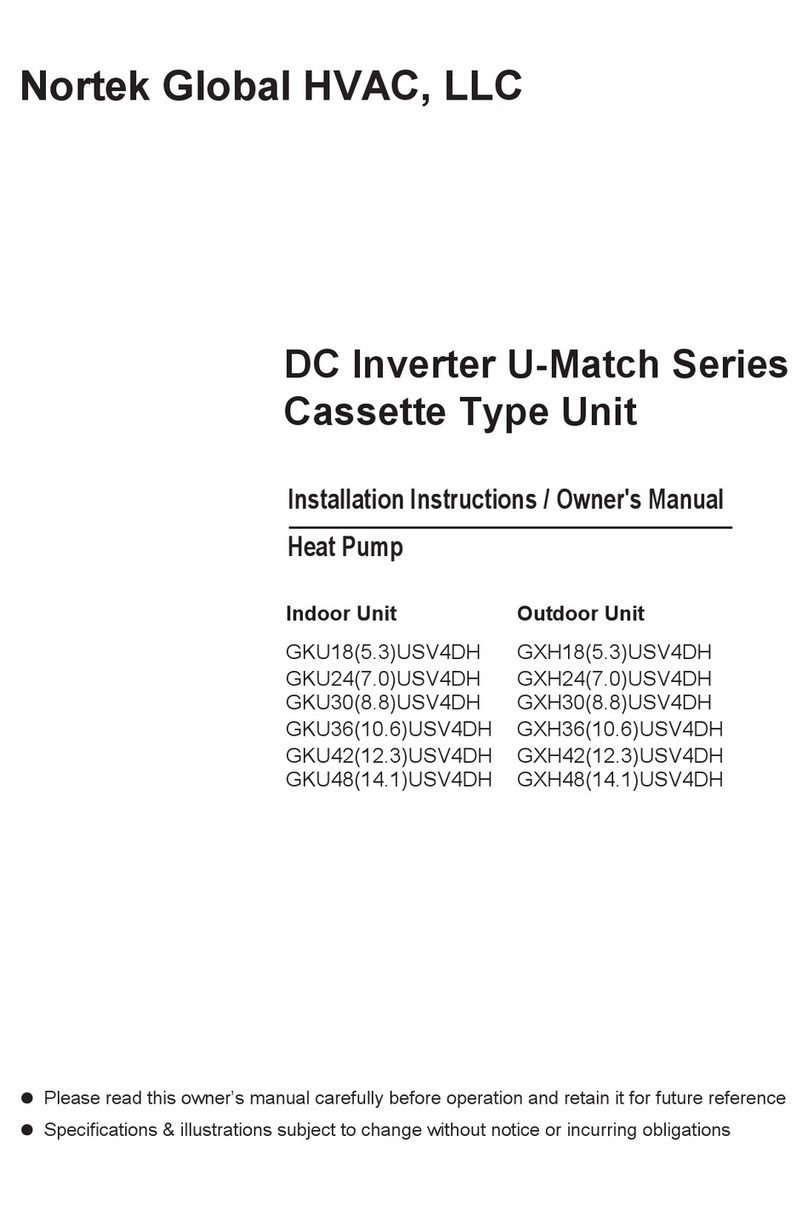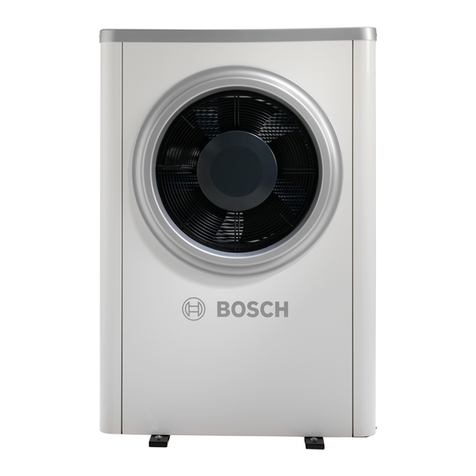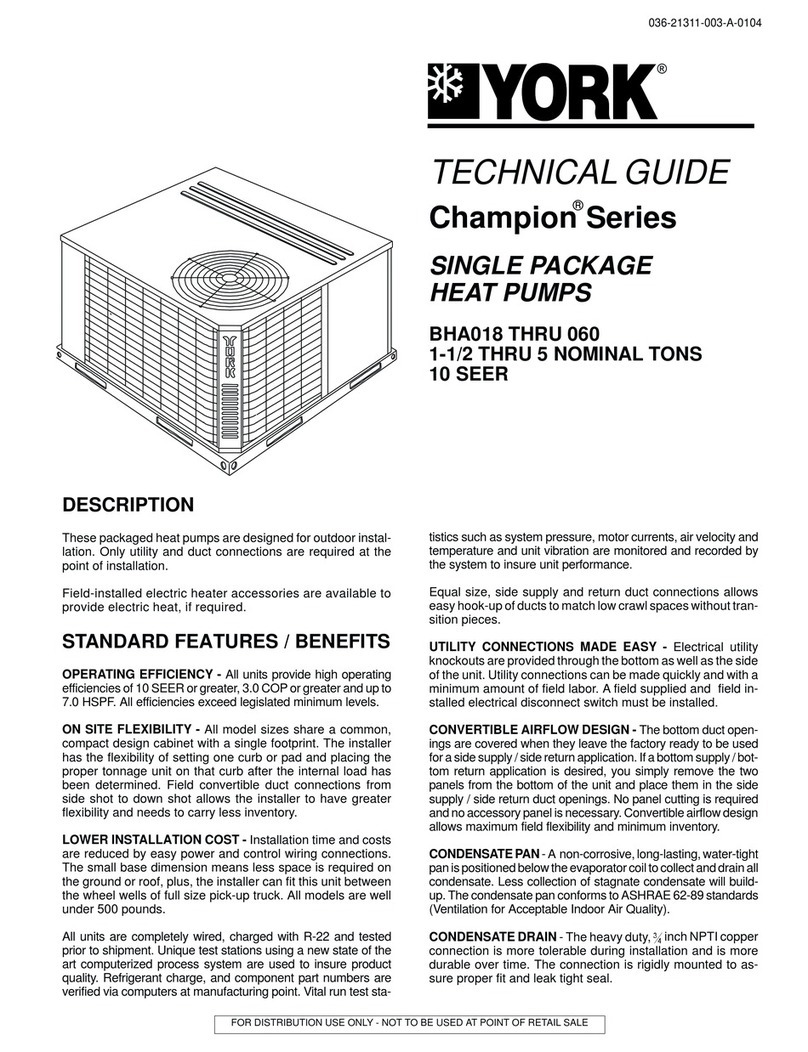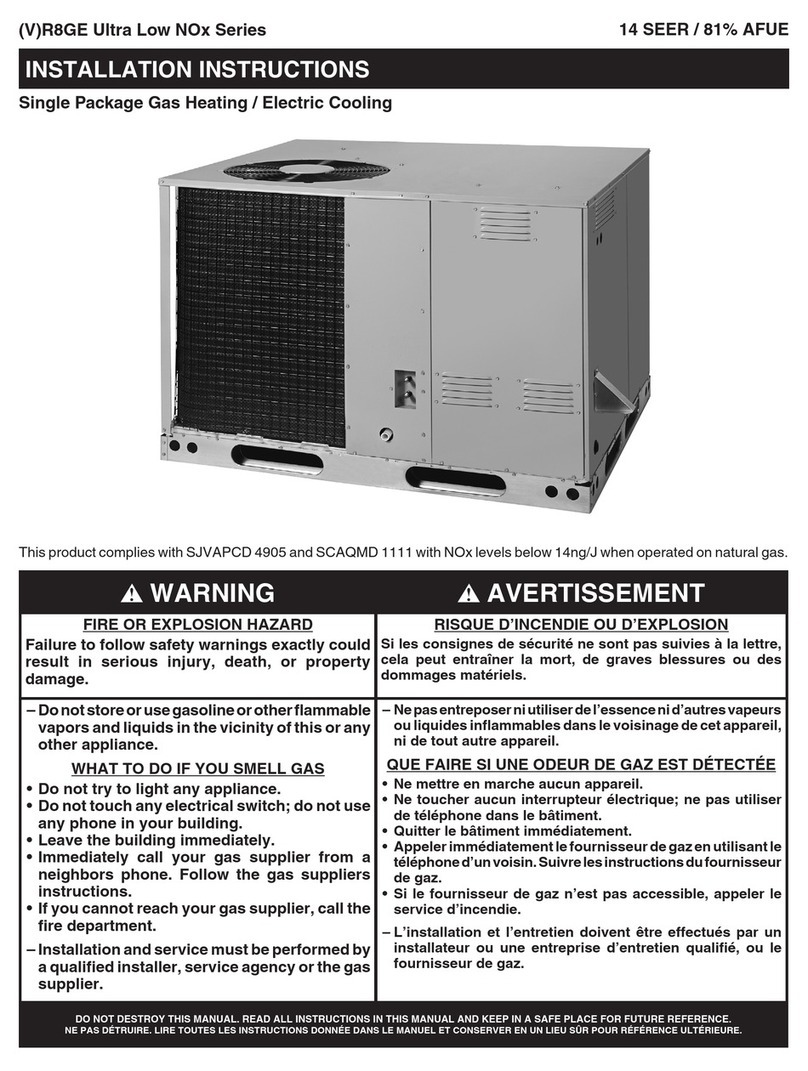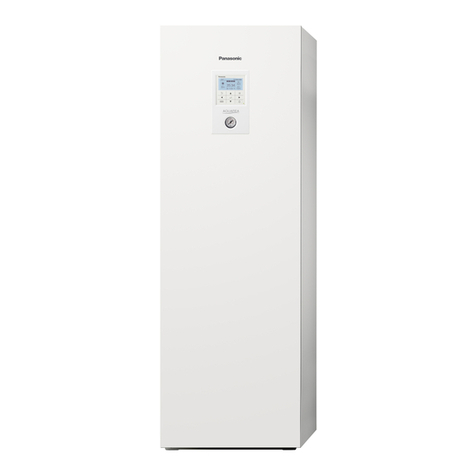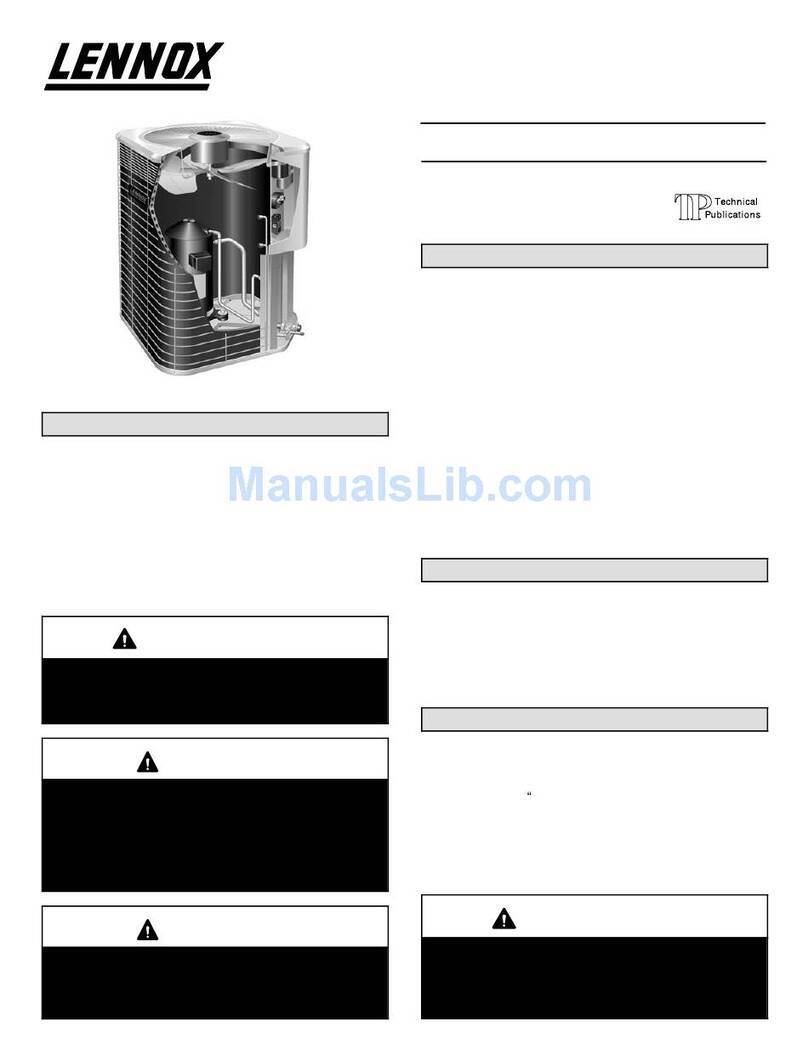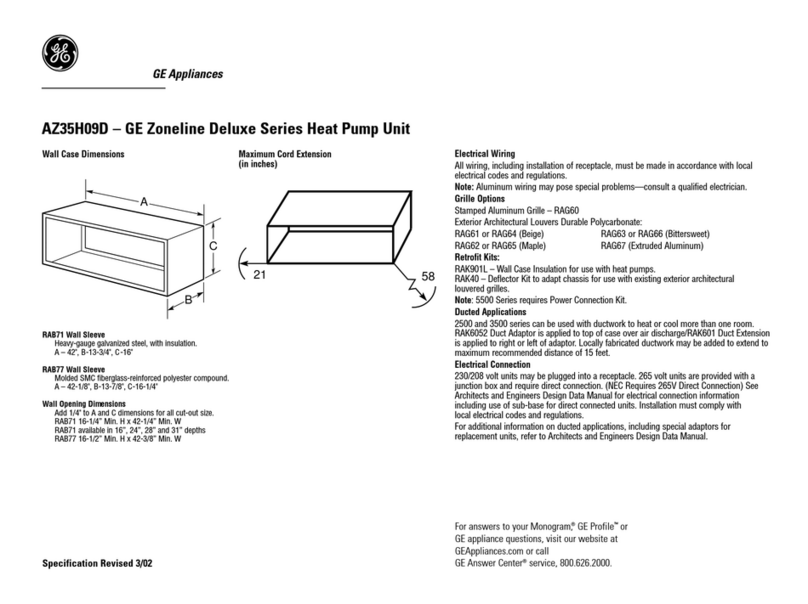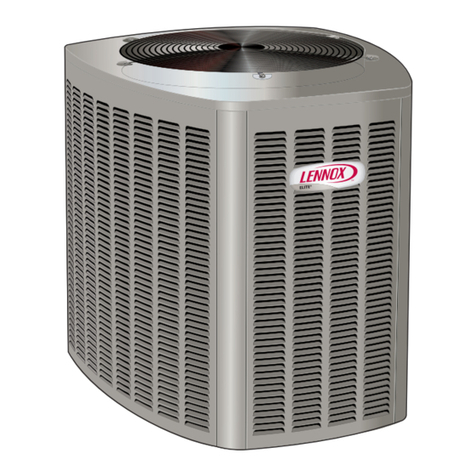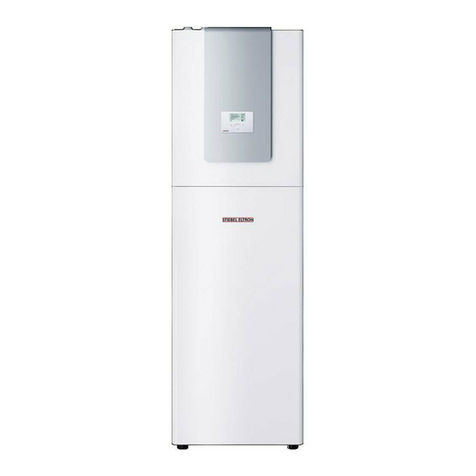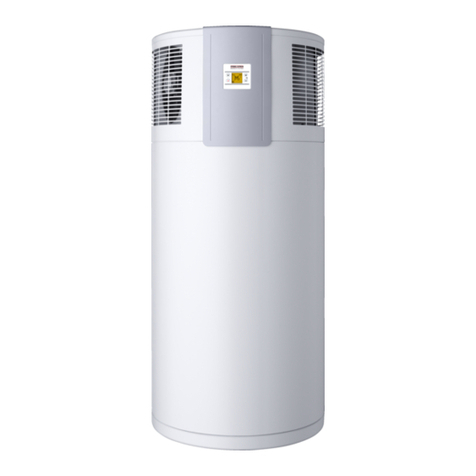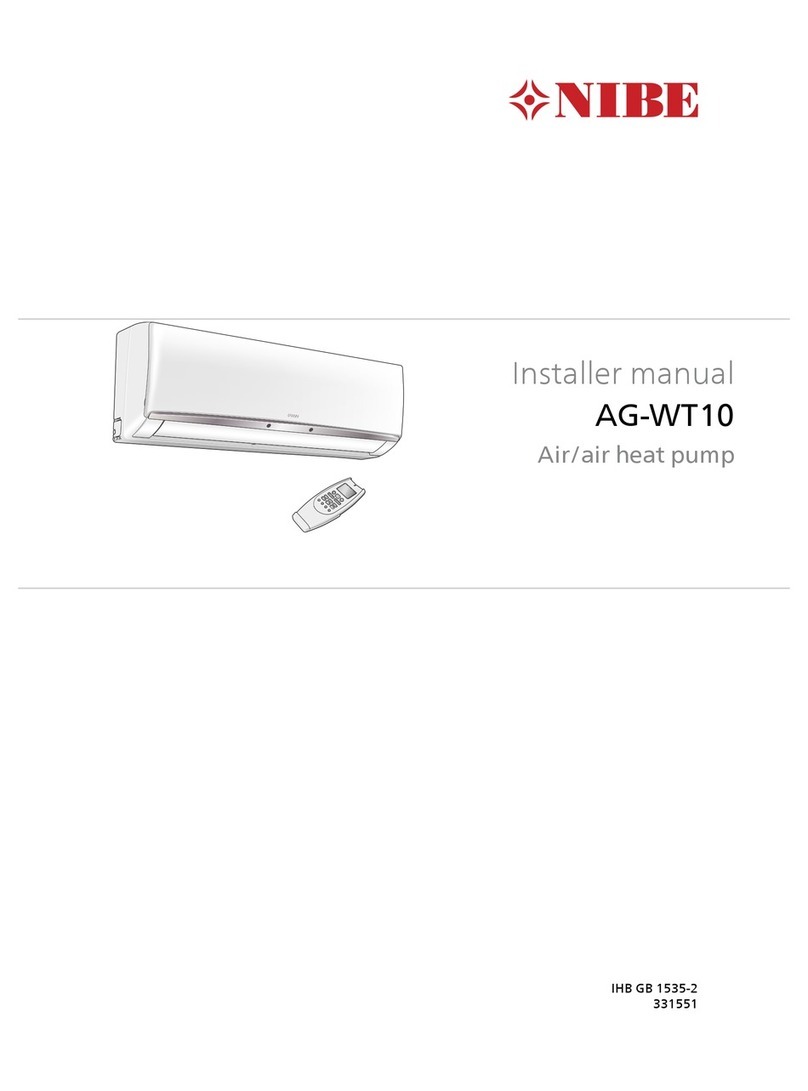OPERATION
Appliance description
6| WWK 220-300 electronic www.stiebel-eltron.com
Heat pump operating principle
A closed circuit within the appliance contains refrigerant (see
"Specification/ Data table"). This refrigerant evaporates at low
temperatures.
In the evaporator, which extracts heat from the air, the refrigerant
changes from its liquid into its gaseous state. A compressor draws
in the gaseous refrigerant and compresses it. This increase in
pressure raises the refrigerant temperature.
That requires electrical energy. The energy (motor heat) is not
lost, but reaches the downstream condenser together with the
compressed refrigerant. There, the refrigerant indirectly transfers
heat to the DHW cylinder. An expansion valve then reduces the
still prevalent pressure and the cycle starts again.
!
Material losses
If you disconnect the appliance from the power supply, it
is no longer protected against frost.
Do not interrupt the power supply to the appliance.
Note
Following an interruption of the power supply, the
compressor operation remains blocked for at least one
minute. The PCB delays electronic starting by a minute,
during which the appliance goes through its initialising
process.
If the compressor subsequently fails to start, it may be
blocked by additional safety devices (Klixon and high
pressure switch). This block should lift after 1 to 10min-
utes.
After the power supply has been re-established, the ap-
pliance continues to operate with the parameters that
were selected before the power supply was interrupted.
3.1 Heating the DHW cylinder
The water is heated by the appliance heat pump. This is the ap-
pliance's standard mode of operation.
An integral sensor captures the amount of heat in the DHW cylin-
der. The water in the DHW cylinder is heated up if the amount of
heat is lower than that required to achieve the set temperature.
For information on the heat-up time of the water in the DHW
cylinder, see chapter "Specification".
3.1.1 Electric emergency/booster heater
The electric emergency/booster heater is used for rapid/comfort
heating and in emergency mode.
In the event of an unexpectedly high hot water demand, the emer-
gency/booster heater can be activated with the rapid heating key.
See chapter "Rapid/comfort heating".
In the event of an appliance fault, emergency mode can be used
to activate the electric emergency/booster heater. See chapter
"Emergency mode".
3.1.2 Connection of an external heat generator (only
WWK300electronicSOL)
!
Material losses
Even if an external heat generator is connected, do not
disconnect the appliance from the power supply as oth-
erwise it is not protected against frost and corrosion. The
power supply must not be interrupted even in winter,
when it is possible that DHW heating is only being pro-
vided via the external heat generator.
The appliance is equipped with an integral smooth tube heat ex-
changer to which an external heat generator can be connected
(e.g. a solar thermal system or central heating system). The DHW
cylinder has sensor wells available for this in various positions. The
qualified contractor must match the controls once during commis-
sioning between the appliance and the external heat generator.
3.2 Appliance operation outside the application
limits
3.2.1 Ambient temperatures below the application limit
At temperatures below the lower application limit hoar frost may
form on the evaporator depending on the air humidity and water
temperature. If hoar frost forms on the evaporator, the hoar frost
temperature monitor switches the heat pump compressor off. The
compressor switches on automatically once the evaporator has
defrosted.
To guarantee fault-free operation of the appliance, make sure
you operate the appliance within its application limits (see
chapter "Specification / Data table").
Note
Heat-up times are longer while the evaporator is defrost-
ing.
3.2.2 Ambient temperatures above the application limit
The safety equipment switches the appliance off if the upper ap-
plication limit is exceeded.
Following a cooling time of several minutes the appliance is
switched back on automatically. The appliance is switched off
again if the ambient temperature rises above the permissible tem-
perature value again.
To guarantee fault-free operation of the appliance, make sure
you operate the appliance within its application limits (see
chapter "Specification / Data table").
3.3 Frost protection
The appliance activates the frost protection function if the integral
sensor in the DHW cylinder captures a temperature below 10°C.
The appliance then heats the water by means of the heat pump
and the electric emergency/booster heater. The heat pump and
electric emergency/booster heater switch off when the tempera-
ture captured by the integral sensor reaches 18°C.

























